 To enhance service speed and avoid tariff delays, we've opened a US warehouse. All US orders ship directly from our US facility.
To enhance service speed and avoid tariff delays, we've opened a US warehouse. All US orders ship directly from our US facility.
| Cat. No. | Product Name | Field of Application | Chemical Structure |
|---|---|---|---|
| DC11251 | Casein Kinase inhibitor A86 Featured |
CKIα inhibitor A86 is a groundbreaking pan-specific inhibitor targeting Casein Kinase I (CSNK1), with a remarkable binding affinity (Kd=1-10 nM) and a specific Kd of 9.8 nM for CKIα. Beyond its primary activity, this compound also demonstrates dual inhibitory effects on the transcriptional kinases CDK7 and CDK9. Notably, it exhibits minimal to no inhibition against CDK8, CDK13, CDK11a, CDK11b, and CDK19, highlighting its selective pharmacological profile.
More description
|

|
| DC9807 | Z-D-Arg-Gly-Arg-pNA (hydrochloride)(S-2765,chromogenic substrate) Featured |
Z-D-Arg-Gly-Arg-pNA is a colorimetric substrate for Factor Xa.Factor Xa preferentially binds to and cleaves the Arg-Gly-Arg (RGR) peptide sequence to release p-nitroanilide (pNA), which can be quantified by colorimetric detection at 405 nm as a measure of Factor Xa activity.
More description
|

|
| DC72431 | For-Met-Leu-pNA(N-formylated peptide substrate) Featured |
For-Met-Leu-pNA is an N-formylated peptide substrate specifically designed for use in deformylase activity assays, providing a reliable tool for studying enzyme function.
More description
|

|
| DC72410 | Ac-Phe-Gly-pNA(chymotrypsin substrate) Featured |
Ac-Phe-Gly-pNA is a synthetic peptide substrate specifically tailored for detecting chymotrypsin activity, offering high specificity for this enzyme.
More description
|

|
| DC71896 | Z-Gly-Pro-pNA(prolyl endopeptidase substrate) Featured |
Z-Gly-Pro-pNA is a synthetic peptide substrate specifically designed for assessing the inhibitory activity of prolyl endopeptidase (PEP), making it a useful tool in enzymatic studies.
More description
|

|
| DC41802 | RETF-4NA TFA(chymase substrate) Featured |
RETF-4NA TFA, a highly sensitive and selective substrate for chymase, effectively measures chymase activity both in its free form and when complexed with α2-macroglobulin (α2M). Its specificity makes it a valuable tool for studying chymase-related biochemical processes.
More description
|

|
| DC67293 | D-Val-Gly-Arg-pNA Featured |
D-Val-Gly-Arg-p-nitroaniline (D-VGR-pNA) is a synthetic chromogenic peptide substrate specifically designed for assessing the enzymatic activity of tissue plasminogen activator (tPA), including its isoforms tPA I and tPA II. Upon cleavage by tPA, the release of p-nitroaniline (pNA) generates a measurable colorimetric signal, enabling precise quantification of amidolytic activity. This substrate is widely utilized in biochemical assays to study tPA’s role in fibrinolysis and to evaluate its enzymatic kinetics in both research and diagnostic applications.
More description
|

|
| DC20235 | Ac-WEHD-pNA(substrate for caspase-1 and caspase-4) Featured |
Ac-WEAD-pNA is a colorimetric substrate for caspase-1 and caspase-4.
More description
|

|
| DC11458 | Ac-DEVD-pNA(Caspase-3 Substrate) Featured |
Ac-DEVD-pNA is a colorimetric substrate for caspase-3 (CPP32) and related cysteine proteases.
More description
|

|
| DC11350 | AC-IETD-PNA (Caspase-8 Chromogenic Substrate) Featured |
Ac-IETD-pNA is a substrate for caspase-8.Caspase-8 preferentially binds to and cleaves the Ile-Glu-Thr-Asp (IETD) peptide sequence to release p-nitroalinide, which can be quantified by colorimetric detection at 405 nm as a measure of enzyme activity.
More description
|

|
| DC24063 | Cediranib maleate Featured |
Cediranib maleate (AZD-2171 maleate) is a highly effective, orally administered inhibitor targeting VEGFR with remarkable potency. It demonstrates IC50 values of less than 1 nM for Flt1, below 3 nM for KDR, 5 nM for both Flt4 and PDGFRα, 36 nM for PDGFRβ, and 2 nM for c-Kit, showcasing its broad inhibitory activity across multiple kinase targets.
More description
|

|
| DC70174 | ADAM17 inhibitor SN-4 Featured |
ADAM17 inhibitor SN-4 is a newly identified, highly specific inhibitor of ADAM17 (A disintegrin and metalloproteinase 17), demonstrating potent activity in blocking TNF-α cleavage in cellular assays with an IC50 value of 3.22 µM. This compound exhibits slightly greater efficacy compared to marimastat, a well-established ADAM17 inhibitor. In vitro studies reveal that SN-4 effectively suppresses ADAM17-mediated cleavage of tumor necrosis factor α (TNF-α) and CD44, while showing no significant impact on ADAM10 activity. Additionally, SN-4 has been shown to inhibit cellular invasion, highlighting its potential as a targeted therapeutic agent for modulating ADAM17-related pathways.
More description
|

|
| DC21359 | BHC Featured |
BHC, a small-molecule inhibitor of skeletal muscle myosin, effectively suppresses muscle activity by targeting myosin function without altering membrane currents. This compound emerges from a screening process aimed at identifying molecules capable of modulating muscle movement through myosin inhibition. By specifically inhibiting myosin, BHC provides a unique mechanism for controlling muscle contractions while maintaining the integrity of cellular electrical properties.
More description
|

|
| DC28266 | Furamidine Featured |
Furamidine (DB75) is abisbenzamidine derivative and an antiparasite agent. Furamidine is a potent, reversible and competitive tyrosyl-DNA phosphodiesterase 1 (TDP-1) inhibitor. Inhibition of TDP-1 by Furamidine is effective both with single- and double-stranded DNA substrates but is slightly stronger with the duplex DNA. Furamidine is also a selective and cell-permeable protein arginine methyltransferase 1 (PRMT1) inhibitor with an IC50 of 9.4 μM. Furamidine is selective for PRMT1 over PRMT5, PRMT6, and PRMT4 (CARM1) (IC50s of 166 µM, 283 µM, and >400 µM, respectively).
More description
|

|
| DC70747 | RTI-7470-44 Featured |
RTI-7470-44 is a highly potent and selective antagonist of the human trace amine-associated receptor 1 (hTAAR1), demonstrating an IC50 of 8.4 nM in an in vitro cAMP functional assay. In radioligand binding studies, it exhibits a Ki value of 0.3 nM, highlighting its strong affinity for hTAAR1. Notably, RTI-7470-44 shows significant species selectivity, with over 90-fold preference for hTAAR1 compared to its rat and mouse counterparts. This compound also possesses favorable pharmacokinetic properties, including good blood-brain barrier penetration, moderate metabolic stability, and a promising off-target safety profile. In electrophysiological studies, RTI-7470-44 enhanced the spontaneous firing rate of dopaminergic neurons in the mouse ventral tegmental area (VTA) and effectively counteracted the effects of the TAAR1 agonist RO5166017.
More description
|

|
| DC67317 | S-2222 N-benzoyl-ile-glu-gly-arg P-nitroanilide acetate Featured |

|
|
| DC67316 | S-2238 H-D-Phe-Pip-Arg-pNA acetate Featured |
.png)
|
|
| DC65646 | Opiorphin trifluoroacetate salt Featured |
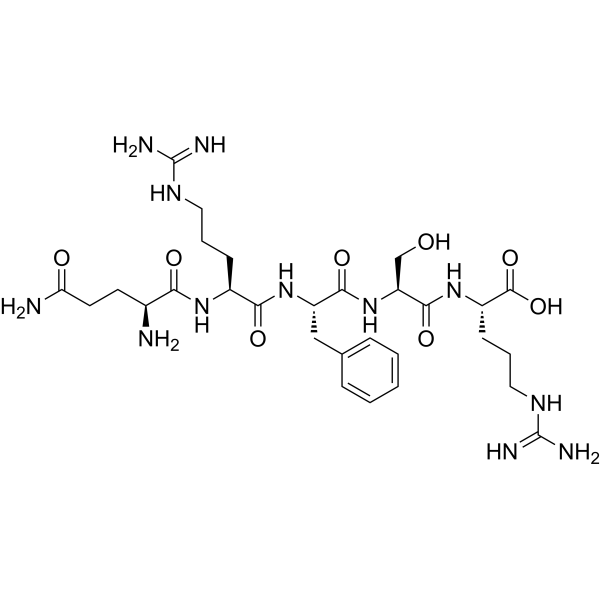
|
|
| DC53045 | STM2457 Featured |
STM2457 is currently available in stock and ready for immediate shipment. It is a highly effective inhibitor targeting the catalytic activity of METTL3/METTL14, with an IC50 value of 16.9 nM and a Kd value of 1.4 nM. This compound exhibits exceptional specificity for METTL3 and demonstrates notable anti-leukaemic properties.
More description
|
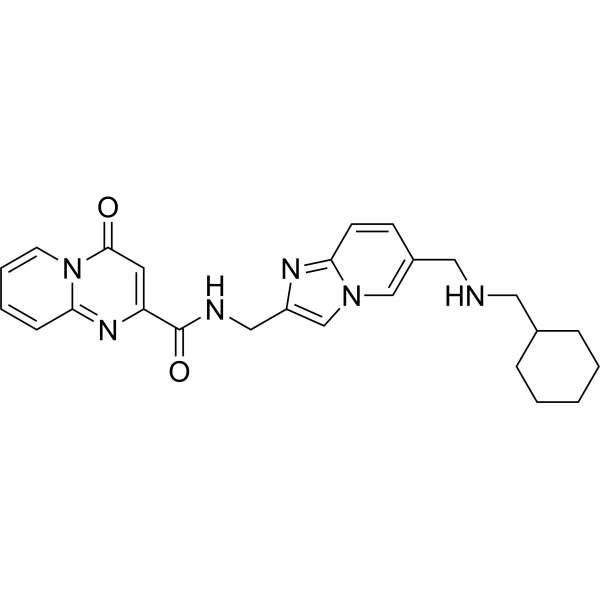
|
| DC60807 | YB-3−17 Featured |
YB-3−17 is a novel bifunctional molecule, robustly inhibits mTOR (IC50 of 0.22 nM) and selectively degrades GSPT1 (DC50 of 5 nM). YB-3−17 degrades GSPT1 selectively without affecting GSPT2 or SNUPN. YB-3−17 shows significant off-target inhibition of kinases like FGR, CSF1R, LCK, or LYN, unlike MLN0128.
More description
|

|
| DC66611 | PF-07328948 Featured |
PF-07328948 is a first-in-class branched-chain ketoacid dehydrogenase kinase (BDK) inhibitor with IC50 of 15 nM and shows a high degree selectivity over a number of kinases and other off-targets. PF-07328948 is the first known selective BDK inhibitor candidate to be examined in clinical studies.
More description
|
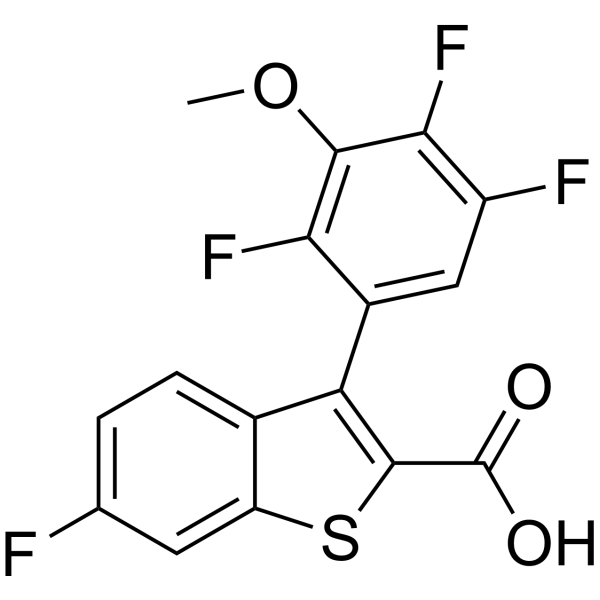
|
| DC60806 | PF-07265028 Featured |
PF-07265028 is a selective inhibitor of hematopoietic progenitor kinase 1 (HPK1) with Ki<0.05 nM and represents >280-fold improvement in biochemical potency while maintaining a comparable lipophilicity.
More description
|

|
| DC60805 | YK-2168 Featured |
YK-2168 is a differentiated selective CDK9 inhibitor with IC50 of 5.9 nM, demonstrating 72.5-fold and 45.2-fold selectivity over CDK1 and CDK2, respectively. YK-2168 achieves superior CDK9 selectivity over AZD4573 and comparable selectivity to BAY1251152.
More description
|
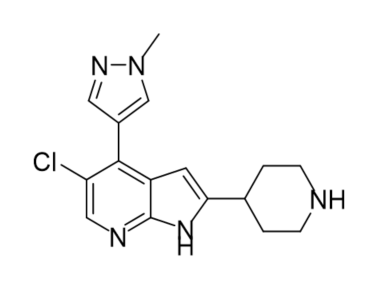
|
| DC60804 | Ferfluor-1 Featured |
Ferfluor-1 is a novel 1,3,4-thiadiazole-functionalized druglike ferrostatin analogue as a ferroptosis inhibitor and photoluminescent indicator. Ferfluor-1 shows superior anti-ferroptosis potency, favorable BBB permeability and in vivo activity against stroke and Parkinson's disease.
More description
|

|
| DC60802 | P6CIT Featured |
P6CIT is a cationic lipid for targeted mRNA delivery to pancreatic ductal adenocarcinoma (PDAC). Pan-tgt (P6CIT) LNP could specifically deliver mRNA to immune cells in PDAC tissues, including dendritic cells (DCs), macrophages, natural killer (NK) cells, and T cells.
More description
|
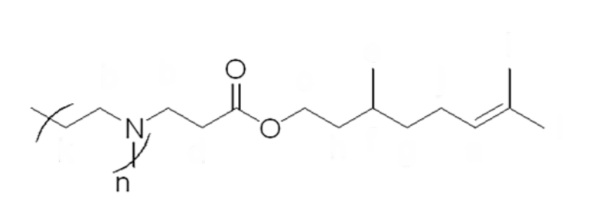
|
| DC60801 | VIP36 Featured |
VIP36 is a peripherally restricted cannabinoid receptor type 1 (CB1) agonist with Ki of 22 nM and exerts analgesic efficacy through peripheral CB1 receptors and shows limited analgesic tolerance.
More description
|
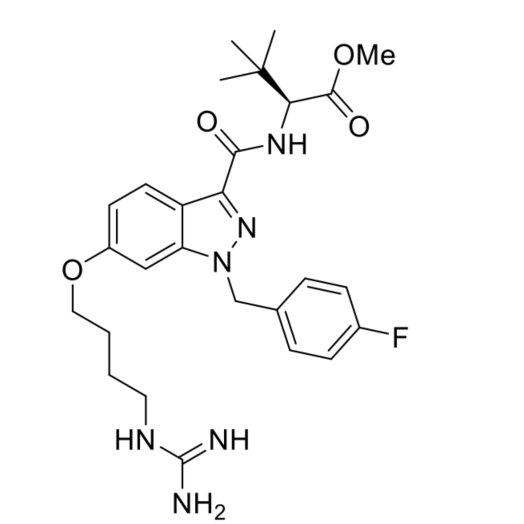
|
| DC73281 | YEATS4 binder 4e Featured |
YEATS4 binder 4e stands out as a highly potent and selective small-molecule inhibitor targeting the epigenetic reader YEATS4. It demonstrates a strong binding affinity with a Ki value of 37 nM. Importantly, this compound exhibits remarkable selectivity, showing over 15-fold preference for YEATS4 compared to other members of the YEATS family, including YEATS1, YEATS2, and YEATS3.
More description
|

|
| A506 | LY2928057 Biosimilar(Anti-SLC40A1 Reference Antibody) Featured |

|
|
| A505 | VB1-050 Biosimilar(Anti-SLC2A8 Reference Antibody) Featured |

|
|
| A504 | Idactamab Biosimilar(Anti-SLC1A5 / ASCT2 Reference Antibody) Featured |
Idactamab (INT-001) is an IgG1-κ antibody with in vivo activity across a spectrum of hematological malignancies. Idactamab can be used for prepare MEDI7247, a potent and specific ADC, targeting ASCT2 (SLC1A5).
More description
|
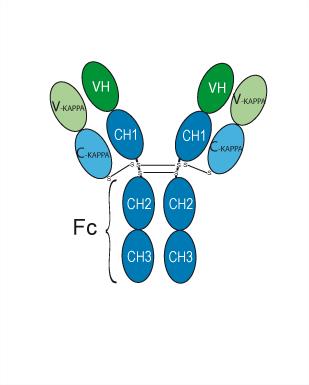
|